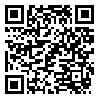BibTeX | RIS | EndNote | Medlars | ProCite | Reference Manager | RefWorks
Send citation to:
URL: http://tumj.tums.ac.ir/article-1-487-en.html
Normal
0
false
false
false
EN-GB
X-NONE
AR-SA
MicrosoftInternetExplorer4
Background: Successful
brachial plexus blocks rely on proper techniques of nerve localization, needle
placement, and local anesthetic injection. Standard approaches used today (elicitation
of paresthesia or nerve-stimulated muscle contraction), unfortunately, are all
"blind" techniques resulting in procedure-related pain and
complications. Ultrasound guidance for brachial plexus blocks can potentially
improve success and complication rates. This study presents the
ultrasound-guided brachial plexus blocks for the first time in Iran in adults
and pediatrics.
Methods: In this
study ultrasound-guided brachial plexus blocks in 30 patients (25 adults &
5 pediatrics) scheduled for an elective upper extremity surgery, are
introduced. Ultrasound imaging was used to identify the brachial plexus before
the block, guide the block needle to reach target nerves, and visualize the
pattern of local anesthetic spread. Needle position was further confirmed by
nerve stimulation before injection. Besides basic variables, block approach,
block time, postoperative analgesia duration (VAS<3 was considered as target
pain control) opioid consumption during surgery, patient satisfaction and block
related complications were reported.
Results: Mean
adult age was 35.5±15 and in pediatric group was 5.2±4. Frequency
of interscalene, supraclavicular, axillary approaches to brachial plexus in
adults was 5, 7, 13 respectively. In pediatrics, only supraclavicular approach
was accomplished. Mean postoperative analgesia time in adults was 8.5±4
and in pediatrics was 10.8±2. No block related complication were observed
and no supplementary, were needed.
Conclusions: Real-time ultrasound imaging during brachial plexus blocks can facilitate nerve localization and needle placement and examine the pattern and extend of local anesthetic spread.
| Rights and permissions | |
 |
This work is licensed under a Creative Commons Attribution-NonCommercial 4.0 International License. |





